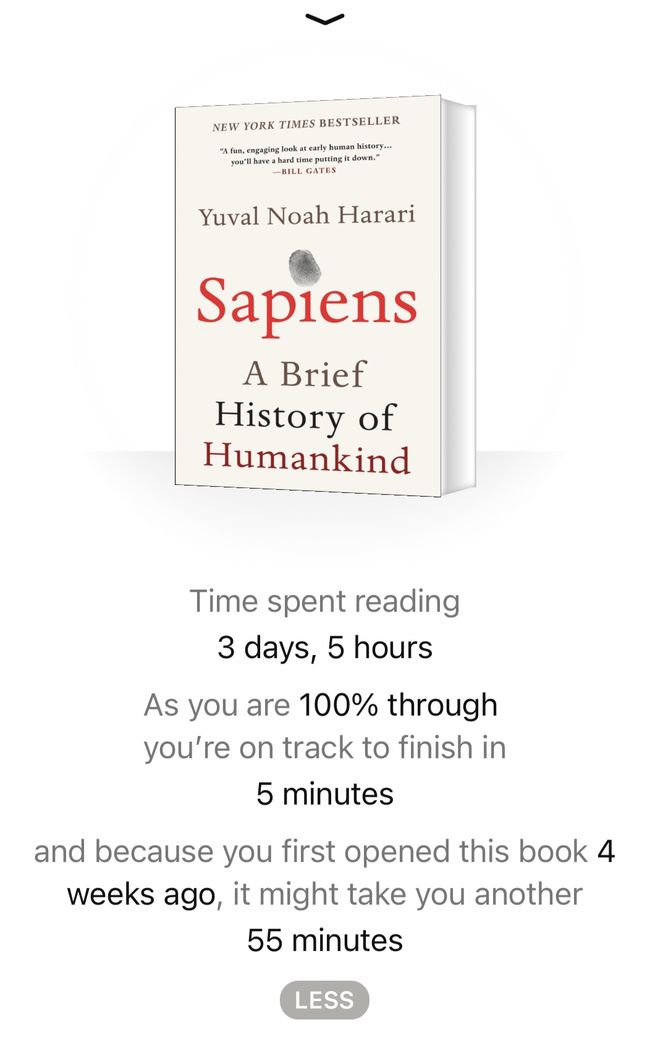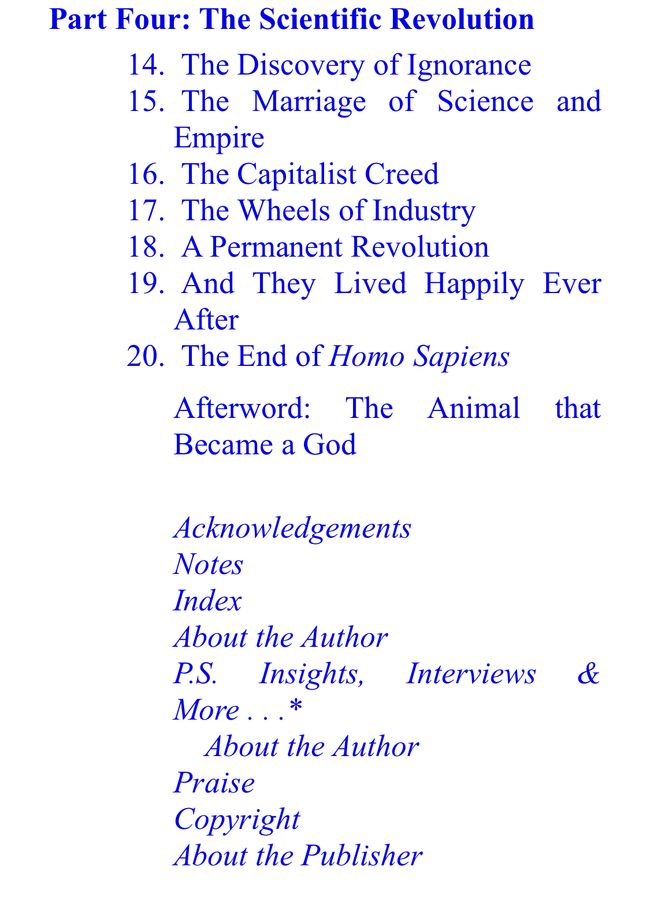3rd book of 2021--20210202
This book is quite informative and it covered many fields from anthropology, archaeology, theology, economy, empires, science, history to arts etc.
It really broadens my mind and makes me understand the reasons behind myths, principles and social norms.
The author is pretty knowledgeable from the depth and breadth of history. He raised lots of novel ideas and conclusions as well, which are beyond our common senses and normal thinking.
This book tells the story of how three important revolutions have affected humans and their fellow organisms.
The three important revolutions shaped the course of history: The Cognitive Revolution kick-started history about 70,000 years ago. The Agricultural Revolution sped it up about 12,000 years ago. The Scientific Revolution, which got underway only 500 years ago, may well end history and start something completely different.
1. The Cognitive Revolution
The appearance of new ways of thinking and communicating constitutes the Cognitive Revolution.
In the Cognitive Revolutions, Homo sapiens conquered the world thanks to the domestication of fire, unique language, the invention of boats, oil lamps, bows and arrows and needles.
What caused it? The most common answer is that our language is amazingly supple. A second theory agrees that our unique language evolved as a means of sharing information about the world.
Homo sapiens is primarily a social animal. Social cooperation is our key for survival and reproduction.
Legends, myths, gods and religions appeared for the first time with the cognitive Revolution.
This ability to speak about fictions is the most unique feature of Sapiens language. Fiction has enabled us not merely to imagine things, but to do so collectively.
The secret was probably the appearance of fiction. A large number of strangers can cooperate successfully by believing in common myths.
Once one succeeds to convince millions of people to believe particular stories about gods, or nations, or limited liability companies, it gives Sapiens immense power, because it enables millions of strangers to cooperate and work towards common goals.
Over the years, people have woven an incredibly complex network of stories, which are known as “imagined realities”. An imagined reality is something that everyone believes in, and as long as this communal belief persists, the imagined reality exerts force in the world.
Ever since the cognitive revolution, sapiens have been living in a dual reality. On the one hand, the objective reality of rivers, trees and lions; and on the other hand, the imagined reality of gods, nations and corporations. As time went by, the imagined reality became ever more powerful.
2. The Agricultural Revolution
The agricultural revolution is one of the most controversial events in history. Some partisans proclaim that it set humankind on the road to prosperity and progress. Others insist that it led to perdition.
Farming enabled the population to increase so radically and rapidly and it was a wonderful boon for chickens, cattle, pigs and sheep, with no regard for individual suffering and happiness.
Farming was the foundation of large-scale political and social systems. Sadly, the diligent peasants almost never achieved the future economic security they so craved through their hard work. Everywhere, rulers and elites sprang up, living off the peasants’ surplus food and leaving them with only a bare subsistence.
The agricultural revolution opened opportunities for the creation of crowded cities and mighty empires, people invented stories about great gods, motherlands and joint-stock companies to provide the needed social links. All these cooperation networks were “imagined orders”. The social norms that sustained them were based neither on ingrained instincts nor on personal acquaintances, but rather on belief in shared myths.
Hammurabi’s Code shows us how ancient Mesopotamians establishes a strict hierarchy system, it claims it is a universal and immutable principle of justice. According to the code, people are divided into two genders and three classes: superior people, commoners and slaves. Members of each gender and class have different values.
How do you cause people to believe in an imagined order such as Christianity, democracy or capitalism?
A. the imagined order is embedded in the material world.
B. the imagined order shapes our desires.
C. the imagined order is inter-subjective.
Myths and fictions accustomed people, nearly from the moment of birth, to think in certain ways, to behave in accordance with certain standards, to want certain things, and to observe certain rules. They thereby created artificial instincts that enabled millions of strangers to cooperate effectively, this network of artificial instincts is called “culture”.
Three potential universal orders appear in the first millennium BC: 1. economic: the monetary order; 2. Political: the imperial order; 3 religious: the order of universal religions such as Buddhism, Christianity and Islam.
Most religions focus on a belief in gods and other supernatural entities. While Buddhism is a natural-law religion which the central figure is not a god but a human being Siddhartha Gautama (释迦摩.乔达摩). He was deeply affected by the suffering evident all around him. He realized the suffering is caused by the behaviour patterns of one’s own mind after 6 years of meditation. His insight was that no matter what the mind experiences, it usually reacts with craving, and craving always involves dissatisfaction. Therefore, the mind is always dissatisfied and restless. People dream for years about finding love but are rarely satisfied when they find it. Others feel that they have settled cheaply, and could have found someone better. A person who does not crave cannot suffer.
He spent the rest of his life to teaching everyone in a single law: suffering arises from craving; the only way to be fully liberated from suffering is to be fully liberated from craving, and the only way to be liberated from craving is to train the mind to experience reality as it is.
The first principle of monotheist religions is “God exists. What does He want from me?” The first principle of Buddhism is “Suffering exists. How do I escape it?”
Commerce, empires and universal religions eventually brought virtually every Sapiens on every continent into the global world we live in today.
3. The Scientific Revolution
The scientific revolution is a revolution of ignorance.
Modern science differs from all previous traditions of knowledge in three critical ways:
1. The willingness to admit ignorance.
2. The centrality of observation and mathematics.
3. The acquisition of new powers.
The feedback loop between science, empire and capital has been history’s chief engine for the past 500 years.
The European imperial expeditions transformed the history of the world: from being a series of histories of isolated peoples and cultures, it became the history of a single integrated human society.
Science gave the empires ideological justification. The empires produced a constant steam of new knowledge branded them as progressive and positive enterprises.
Money has been essential both for building empires and for promoting science.
The Industrial revolution opened up new ways to convert energy and to produce goods, largely liberating humankind from its dependence on the surrounding ecosystem. Whenever there is a shortage of energy and raw materials, investments have flowed into scientific and technological research. These have invariably produced not only more efficient ways of exploiting existing resources, but also completely new types of energy and materials, the resources available to humankind are constantly increasing, and are likely to continue to do so.
Sapiens gained control of a cornucopia of new materials and energy sources, while simultaneously destroy what remains of the natural habitat and driving most other species to extinction. Many call this process “the destruction of nature”. But it’s not really destruction, it’s a change. Nature cannot be destroyed.
With the technology, Homo sapiens is transcending the natural selection limits and beginning to break the laws of natural selection, replacing them with the laws of intelligent design.
The replacement of natural selection by intelligent design could happen in any of three ways: through biological engineering, cyborg engineering (cyborgs are beings that combine organic with non-organic parts) or the engineering of inorganic life.
In a sense, nearly all of us are bionic these days, since our natural senses and functions are supplemented by devices such as eyeglasses, pacemakers, orthotics, and even computers and mobiles phones (which relieve our brains of some of their data storage and processing burdens). We stand poised on the brink of becoming true cyborgs, of having inorganic features that are inseparable from our bodies, features that modify our abilities, desires, personalities and identities.
Yet the real potential of future technologies is to change Homo sapiens itself, including our emotions and desires, and not merely our vehicles and weapons.
Such dilemmas are dwarfed by the ethical, social and political implications of the quest for immortality and of our potential new abilities to create superhumans.
What we should take seriously is the idea that the next stage of history will include not only technological and organisational transformations, but also fundamental transformation in human consciousness and identity.



